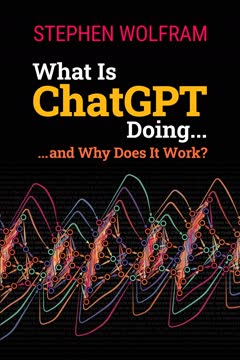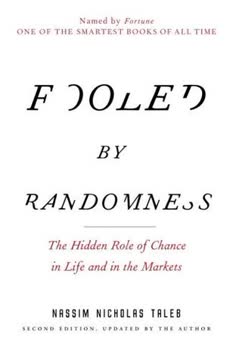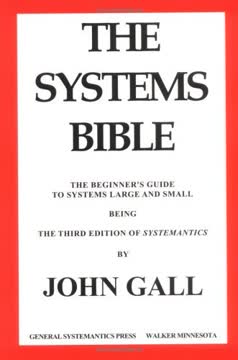نکات کلیدی
1. عدم قطعیت رادیکال جهان ما را تعریف میکند، نه ریسک احتمالی
ما به سادگی نمیدانیم.
عدم قطعیت همهجا حاضر است. در بیشتر موقعیتهای واقعی، ما با عدم قطعیت رادیکال مواجه هستیم - وضعیتی که در آن نمیتوانیم تمام نتایج ممکن را شمارش کنیم یا به آنها احتمالهای معناداری اختصاص دهیم. این بهطور بنیادی با ریسک احتمالی متفاوت است، جایی که نتایج و احتمالهای آنها شناخته شدهاند.
نمونهها فراوانند:
- رویدادهای تاریخی: حمله ناپلئون به روسیه، سفر کلمب به قاره آمریکا
- تصمیمات تجاری: تکامل صنعت کامپیوتر، ظهور گوشیهای هوشمند
- انتخابهای سیاسی: بحران موشکی کوبا، برگزیت
پیامدها:
- مدلهای تصمیمگیری سنتی مبتنی بر احتمالات معمولاً در برابر عدم قطعیت رادیکال شکست میخورند
- ما باید رویکردهای جایگزینی برای پیمایش در دنیای غیرقابل پیشبینی توسعه دهیم
2. روایتها، نه احتمالات، راهنمای تصمیمگیری در شرایط عدم قطعیت هستند
هیچکس به خاطر یک عدد تصمیم نمیگیرد. آنها به یک داستان نیاز دارند.
روایتها درک را شکل میدهند. انسانها بهطور طبیعی روایتهایی را برای درک موقعیتهای پیچیده و هدایت تصمیمات خود میسازند و به آنها تکیه میکنند. این داستانها چارچوبی برای تفسیر رویدادها و پیشبینی نتایج بالقوه فراهم میکنند.
جنبههای کلیدی تفکر روایتی:
- کمک به سازماندهی و اولویتبندی اطلاعات
- امکان ادغام دیدگاهها و تجربیات متنوع
- تسهیل ارتباط و تصمیمگیری جمعی
کاربردهای واقعی:
- استراتژی تجاری: استیو جابز در انتظار "چیز بزرگ بعدی" در اپل
- رهبری سیاسی: سخنرانیها و تصمیمگیریهای چرچیل در زمان جنگ
- کشف علمی: توسعه نظریه میکروب در پزشکی
3. مدلهای دنیای کوچک بینشهایی ارائه میدهند اما نمیتوانند پیچیدگیهای واقعی را بهطور کامل درک کنند
همه مدلها اشتباه هستند، اما برخی مفیدند.
مدلها محدودیت دارند. در حالی که مدلهای دنیای کوچک در اقتصاد و مالی میتوانند بینشهای ارزشمندی ارائه دهند، اما معمولاً قادر به درک کامل پیچیدگیهای موقعیتهای واقعی نیستند. شناسایی این محدودیتها برای تصمیمگیری مؤثر حیاتی است.
ویژگیهای مدلهای دنیای کوچک:
- پارامترها و نتایج بهخوبی تعریف شده
- مبتنی بر فرضیات سادهسازی شده
- معمولاً به استدلال احتمالی تکیه دارند
خطرات وابستگی بیش از حد:
- بحران مالی 2008: مدلهای ریسک نتوانستند ریسکهای سیستماتیک را در نظر بگیرند
- پیشبینی اقتصادی: سابقه ضعیف در پیشبینی رویدادهای بزرگ
رویکرد متعادل:
- از مدلها برای کسب بینش و چارچوببندی مشکلات استفاده کنید
- تحلیل مبتنی بر مدل را با استدلال روایتی و تجربههای واقعی تکمیل کنید
4. تصمیمگیری مؤثر نیازمند به چالش کشیدن روایتهای غالب است
این واقعیت که ما توانستیم صحبت کنیم، بحث کنیم، استدلال کنیم، اختلاف نظر داشته باشیم و سپس دوباره بحث کنیم، در انتخاب مسیر نهایی ما ضروری بود.
چالش به تصمیمات بهتر کمک میکند. تصمیمگیرندگان خوب بهطور فعال به دنبال دیدگاههای متنوع هستند و چالشهایی را به روایتهای غالب تشویق میکنند. این فرآیند به شناسایی نقاط کور کمک کرده و تصمیم نهایی را تقویت میکند.
تکنیکهای ترویج چالش سازنده:
- وکیل شیطان: به کسی مأموریت دهید تا علیه دیدگاه غالب استدلال کند
- تمرینات تیم قرمز/تیم آبی: گروههای رقیب برای تحلیل یک مشکل ایجاد کنید
- تخصص متنوع: شامل افرادی با پیشینهها و تجربیات مختلف
نمونههای تاریخی:
- مدیریت کندی در بحران موشکی کوبا
- کابینه "تیم رقبای" لینکلن در طول جنگ داخلی
پیامدهای سازمانی:
- ایجاد فرهنگی که به بحثهای آزاد و نظرات مخالف ارزش میدهد
- با جستجوی فعالانه دیدگاههای جایگزین از تفکر گروهی جلوگیری کنید
5. عقلانیت تکاملی بر عقلانیت اصولی در دنیای بزرگ غلبه میکند
انسانها در سازگاری با محیطی که در آن قرار دارند موفق هستند و برای انجام محاسبات سریع مسائل بهخوبی تعریف شده که کامپیوترها در آنها برتری دارند، تکامل نیافتهاند.
استدلال انسانی سازگار است. فرآیندهای شناختی ما برای مقابله با پیچیدگیها و عدم قطعیتهای دنیای واقعی تکامل یافتهاند، نه برای حل مسائل ریاضی انتزاعی. این "عقلانیت تکاملی" معمولاً در پیمایش عدم قطعیت رادیکال مؤثرتر از رویکردهای منطقی رسمی است.
جنبههای کلیدی عقلانیت تکاملی:
- تکیه بر هورستیکها و شناسایی الگوها
- ادغام احساسات و شهود در تصمیمگیری
- سازگاری با محیطها و زمینههای در حال تغییر
تضاد با عقلانیت اصولی:
- رویکرد اصولی فرض میکند که اطلاعات کامل و مسائل بهخوبی تعریف شده وجود دارد
- معمولاً قادر به در نظر گرفتن پیچیدگیها و ابهامات دنیای واقعی نیست
پیامدها:
- فرآیندهای تصمیمگیری باید از شهود و تجربه انسانی بهرهبرداری کنند
- مدلها و الگوریتمهای رسمی باید مکمل، نه جایگزین، قضاوت انسانی باشند
6. هوش جمعی کلید پیمایش در عدم قطعیت رادیکال است
هوش انسانی، هوش جمعی است و این منبع دستاوردهای اقتصادی فوقالعاده انسانی است.
همکاری تصمیمگیری را تقویت میکند. در دنیای عدم قطعیت رادیکال، هیچ فردی تمام دانش و بینشهای لازم را در اختیار ندارد. هوش جمعی - دانش و مهارتهای ترکیبی یک گروه - برای حل مؤثر مشکلات و نوآوری حیاتی است.
مزایای هوش جمعی:
- دیدگاههای متنوع به راهحلهای قویتری منجر میشود
- دانش مشترک نقاط کور فردی را کاهش میدهد
- فرآیندهای گروهی میتوانند ایدهها را به چالش کشیده و اصلاح کنند
نمونههای هوش جمعی در عمل:
- توسعه نرمافزار متنباز
- همکاریهای تحقیقاتی علمی
- پلتفرمهای حل مسئله جمعی مانند InnoCentive
ترویج هوش جمعی:
- ایجاد محیطهایی که ارتباطات باز را تشویق میکند
- توسعه سیستمهایی برای اشتراکگذاری و همکاری دانش
- ارزشگذاری و ادغام تخصصها و تجربیات متنوع
7. مدلهای مالی مفید هستند اما وقتی بهطور بیش از حد جدی گرفته شوند، خطرناکاند
اعداد استفاده شده در این محاسبات اختراعی هستند.
مدلها محدودیت دارند. در حالی که مدلهای مالی میتوانند بینشهای ارزشمندی ارائه دهند، اما معمولاً به فرضیات سادهسازی شده و اعداد اختراعی تکیه دارند. جدی گرفتن بیش از حد این مدلها میتواند به تصورات خطرناک درباره ریسک و ارزش منجر شود.
دامهای رایج:
- اعتماد به نفس بیش از حد در پیشبینیهای مدل
- نادیده گرفتن عواملی که در مدل گنجانده نشدهاند
- فرض اینکه الگوهای گذشته بهطور نامحدود ادامه خواهند یافت
شکستهای قابل توجه:
- سقوط Long-Term Capital Management در سال 1998
- دست کم گرفتن ریسک سیستماتیک که به بحران مالی 2008 منجر شد
رویکرد متعادل:
- از مدلها بهعنوان یکی از ورودیها در تصمیمگیری استفاده کنید
- بهطور مداوم فرضیات مدل را زیر سؤال ببرید و بهروزرسانی کنید
- تحلیل کمی را با قضاوت کیفی تکمیل کنید
8. استحکام و تابآوری، نه قطعیت، کلید مدیریت عدم قطعیت هستند
عدم قطعیت رادیکال به این معناست که بهندرت ممکن است مجموعه کامل توضیحات ممکن را بدانیم.
عدم قطعیت را بپذیرید. بهجای جستجوی قطعیت توهمی، بر ساخت سیستمها و استراتژیهایی تمرکز کنید که در برابر رویدادهای غیرمنتظره استحکام و تابآوری دارند. این رویکرد محدودیتهای دانش ما را به رسمیت میشناسد و ما را برای مجموعهای از نتایج بالقوه آماده میکند.
اصول کلیدی:
- تنوع: ریسکها را در چندین حوزه پخش کنید
- انعطافپذیری: قابلیت سازگاری با شرایط در حال تغییر را ایجاد کنید
- افزونگی: سیستمهای پشتیبان و برنامههای اضطراری ایجاد کنید
کاربردها:
- استراتژی سرمایهگذاری: تنوع گسترده در کلاسهای دارایی و جغرافیا
- برنامهریزی تجاری: برنامهریزی سناریو و آزمایش استرس
- سیاست عمومی: طراحی مقرراتی که میتواند در برابر شرایط اقتصادی مختلف مقاومت کند
تغییر ذهنیت:
- از پیشبینی به آمادگی حرکت کنید
- بر ساخت قابلیتها بهجای پیشبینی نتایج خاص تمرکز کنید
- سازگاری و یادگیری مداوم را پرورش دهید
آخرین بهروزرسانی::
FAQ
What is Radical Uncertainty: Decision-Making Beyond the Numbers by John Kay and Mervyn King about?
- Explores decision-making limits: The book examines how traditional quantitative models and forecasts often fail to capture the complexity and unpredictability of real-world decision-making.
- Focus on radical uncertainty: It introduces the concept of radical uncertainty, where future events cannot be assigned meaningful probabilities or fully anticipated.
- Emphasizes narratives and judgment: Kay and King argue for the importance of narratives, practical knowledge, and collective intelligence in navigating uncertainty in economics, business, and policy.
Why should I read Radical Uncertainty: Decision-Making Beyond the Numbers by John Kay and Mervyn King?
- Challenges conventional wisdom: The book critiques the overreliance on optimization, models, and forecasts in economics, business, and finance, showing their limitations in real-world situations.
- Offers practical decision-making insights: Readers gain a richer framework for making decisions under uncertainty, emphasizing judgment, communication, and adaptability.
- Broad interdisciplinary relevance: Drawing from history, psychology, law, and economics, the book is valuable for policymakers, business leaders, and anyone interested in how decisions are made.
What are the key takeaways from Radical Uncertainty: Decision-Making Beyond the Numbers by John Kay and Mervyn King?
- Numbers don’t tell all: Quantification and models can create a false sense of understanding, often missing the true complexity of real-world problems.
- Narratives are essential: Humans use stories to interpret unique events, communicate decisions, and guide action when probabilities are unavailable.
- Models have limits: Small-world models are useful but incomplete; many real-world events cannot be assigned meaningful probabilities or predicted reliably.
- Collective intelligence matters: Effective decision-making relies on communication, challenge, and cooperation among diverse perspectives, not just isolated optimization.
What is "radical uncertainty" as defined in Radical Uncertainty: Decision-Making Beyond the Numbers by John Kay and Mervyn King?
- Unknowable future: Radical uncertainty refers to situations where the future is not just unknown but fundamentally unknowable, making it impossible to list all possible outcomes or assign meaningful probabilities.
- Contrast with risk: Unlike risk, which involves measurable variability and known probabilities, radical uncertainty deals with ambiguity, vagueness, and ill-defined problems.
- Implications for models: Models that assume known probabilities or optimization are often misleading under radical uncertainty, as they pretend to knowledge that does not exist.
How do John Kay and Mervyn King distinguish between "risk" and "uncertainty" in Radical Uncertainty: Decision-Making Beyond the Numbers?
- Risk as measurable variability: Risk involves situations where outcomes and their probabilities are known or can be estimated, allowing for quantification and pricing.
- Uncertainty as unknowable: Radical uncertainty involves unknown or unknowable outcomes and probabilities, making it impossible to assign reliable probabilities or optimize decisions.
- Consequences of confusion: Treating radical uncertainty as risk leads to overconfidence in models and can create systemic vulnerabilities, as seen in financial crises.
How do John Kay and Mervyn King define and use "narratives" in decision-making in Radical Uncertainty: Decision-Making Beyond the Numbers?
- Narratives as sense-making tools: Narratives help humans interpret complex, uncertain situations where probabilities are unavailable, providing coherence and credibility.
- Communication and social context: Narratives are essential for persuading others, eliciting cooperation, and making collective decisions under uncertainty.
- Evolving and challengeable: Good narratives are open to challenge and evolve over time, much like scientific paradigms, ensuring adaptability and resilience.
What is the difference between "puzzles" and "mysteries" in decision-making according to Radical Uncertainty: Decision-Making Beyond the Numbers by John Kay and Mervyn King?
- Puzzles are well-defined: Puzzles have clear rules and a single correct solution, solvable by probabilistic or logical reasoning (e.g., games of chance, engineering problems).
- Mysteries are ill-defined: Mysteries lack clear definitions, have no objectively correct answers, and involve vagueness and indeterminacy (e.g., geopolitical events, business strategy).
- Different approaches required: While puzzles can be addressed with optimization and probability, mysteries require narrative framing, judgment, and acceptance of ambiguity.
How do John Kay and Mervyn King critique the use of probabilities and optimization in economics and decision theory in Radical Uncertainty: Decision-Making Beyond the Numbers?
- Inapplicability in large worlds: Probabilistic models and optimization assume well-defined options and known probabilities, which rarely exist in real economic or political contexts.
- Model-based probabilities vs. reality: The authors highlight the danger of confusing model-based probabilities with real-world probabilities, as seen in the 2007–08 financial crisis.
- Limits of axiomatic rationality: Axiomatic definitions of rationality, which underpin expected utility maximization, fail to capture how real people make decisions under radical uncertainty.
What is the difference between "axiomatic rationality" and "evolutionary rationality" in Radical Uncertainty: Decision-Making Beyond the Numbers by John Kay and Mervyn King?
- Axiomatic rationality: Defined by adherence to logical axioms and maximization of expected utility, suitable for small, well-defined problems.
- Evolutionary rationality: Describes how humans have evolved cognitive and social abilities to cope with complex, uncertain worlds through heuristics, narratives, and cooperation.
- Practical decision-making: Evolutionary rationality better explains real-world behavior, including the use of rules of thumb, satisficing, and adaptive judgment rather than strict optimization.
How does Radical Uncertainty: Decision-Making Beyond the Numbers by John Kay and Mervyn King view the role of human intelligence versus artificial intelligence in decision-making under uncertainty?
- Different strengths: Humans excel at dealing with ill-defined, unique, and radically uncertain problems through narrative and judgment, while AI excels at well-defined, repeatable puzzles.
- Limits of AI: Even advanced AI systems rely on defined rules and repeated play, and cannot handle unique, complex political or economic decisions.
- Complementarity: AI should augment human decision-making, not replace it, as good judgment and context understanding remain uniquely human capabilities.
What practical advice or methods does Radical Uncertainty: Decision-Making Beyond the Numbers by John Kay and Mervyn King offer for living and making decisions in a radically uncertain world?
- Embrace uncertainty: Accept that perfect knowledge is impossible and that uncertainty is pervasive and unavoidable.
- Use narratives and communication: Build and revise stories collaboratively to make sense of complex situations and guide decisions.
- Focus on robustness and adaptability: Develop strategies and policies that are resilient to multiple possible futures rather than optimizing for a single predicted outcome.
What are some real-world examples of model misuse discussed in Radical Uncertainty: Decision-Making Beyond the Numbers by John Kay and Mervyn King?
- Financial risk models: Value at risk models underestimated risks before the 2007–08 crisis due to reliance on historical data and assumptions of stationarity.
- Transport project appraisals: The UK’s WebTAG model used invented numbers and ignored broader impacts, leading to misleading conclusions about infrastructure investments.
- Fisheries and health models: Complex models in Canadian fisheries and WHO HIV projections failed due to oversimplification or neglect of key behavioral factors, demonstrating the dangers of overreliance on quantitative models.
نقد و بررسی
کتاب عدم قطعیت رادیکال با نظرات متنوعی مواجه شده و میانگین امتیاز آن ۳.۹۰ از ۵ است. بسیاری از خوانندگان به نقد این کتاب از وابستگی بیش از حد به مدلهای ریاضی در اقتصاد و تصمیمگیری در شرایط عدم قطعیت توجه دارند. تخصص نویسندگان و سبک نگارش جذاب آنها مورد تحسین قرار گرفته است. با این حال، برخی این کتاب را تکراری و بیش از حد طولانی میدانند. منتقدان بر این باورند که ایدههای اصلی میتوانست بهطور مختصرتر بیان شود. با وجود این نقاط ضعف، بسیاری از خوانندگان آن را یک دستاورد مهم در این حوزه میدانند که بینشهای ارزشمندی در مواجهه با موقعیتهای پیچیده و غیرقابل پیشبینی ارائه میدهد.
Similar Books














